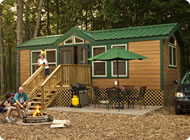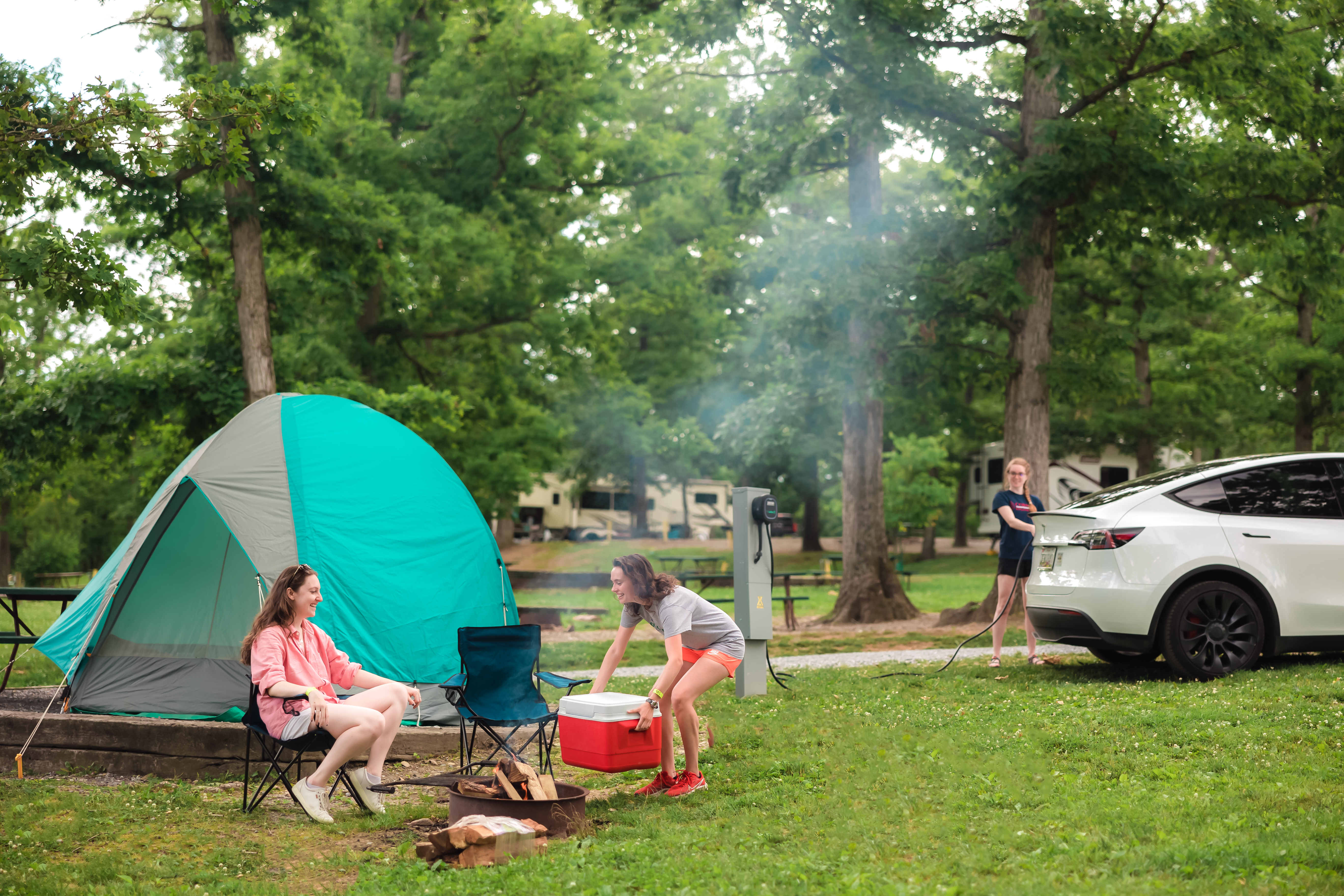For many people, including children and families, spending time outdoors can be one of the most enriching, enjoyable and memorable pastimes. As is true with most hobbies and activities, there are certain risks that come with outdoor activities. Some of these risks include things like sunburns and dehydration, which can be easily avoided thanks to interventions such as proper clothes, sunscreen and access to water. A slightly lesser known risk that some outdoor hobbies– especially activities like hiking and camping in heavily wooded areas– can carry an additional risk. That risk is the exposure to ticks, and the potential of a tick bite. Luckily, with some basic awareness of ticks, what they are and how they operate, it can be relatively simple to avoid serious consequences from tick exposure. The following guide can give you some great, helpful information to make your outdoor adventures as fun and tick-free as possible.
What are Ticks?
Essentially, ticks are small insects related to spiders and mites. Unlike spiders, ticks are parasitic, meaning they rely on warm-blooded host organisms in order to feed. Ticks can attach themselves to all different kinds of animals, from humans to dogs to birds to wild deer and others. Ticks tend to inhabit wooded areas, with lots of trees, grasses and shrubs. They can often settle in leaf piles, overgrown parts of a yard and even woodpiles. All of these environments make it easy for ticks to leap onto potential hosts– meaning, any warm-blooded animal that walks by. While hiking or camping outdoors for an extended period of time can increase your risk of tick exposure, you can be just as easily exposed to ticks from everyday activities such as gardening, mowing the lawn and/or playing in the yard or the parks near your home.
Most ticks have eight legs, flat, oval bodies, and they tend to be quite small. As such, these creatures can be difficult to spot if you don’t know exactly what to look for. Only mosquitos are responsible for passing more diseases to humans than ticks, giving ticks quite a bad reputation. However, understanding different kinds of common ticks and the dangers they pose can be one of the most helpful strategies for mitigating your exposure to tick-borne disease(s).
Many different types of ticks exist throughout the world, including the North American continent. They can be divided into two categories– Ixodidae (hard ticks) and Argasidae (soft ticks). It’s estimated that about 700 hard tick species and about 200 soft tick species exist throughout the globe, however, only a few of these species can actually transmit diseases to humans. In America, the most prevalent types of ticks include Blacklegged ticks (also called deer ticks), American dog ticks (also called wood ticks), Lone Star ticks and Rocky Mountain wood ticks, among others.
- Blacklegged ticks. True to the name, Blacklegged ticks are easily identified by the dark reddish-brown bodies and black legs. These are among the most infamous types of ticks, as they are known to transmit Borrelia burgdorferi, which can cause Lyme disease. While originally centered in the Northeast and Midwest, Blacklegged ticks can now be found throughout nearly every part of America, including the East, South, Central and Northern regions. Blacklegged ticks are not seasonal– they can actively search for a host year-round, including in the winter.
- American dog ticks. American dog ticks have flat, dark brown bodies. Females can appear with more of an off-white cast, while males tend to look more mottled. Risk of a bite from this species is usually highest in the spring and summer months. American dog ticks are primarily spread throughout the East and Gulf Coast and along the Pacific Coast, though they can be found as far north as Canada and parts of Alaska.
- Lone Star ticks. Like Blacklegged ticks, the trick to spotting a Lone Star tick is in its name. Lone Star ticks are a reddish brown color; the females also feature a white mark (the so-called “Lone Star”) in the middle of their bodies. Lone Star ticks can pass a number of different illnesses to humans, and are most aggressive from early Spring to late Fall. They can be found throughout the Eastern United States, particularly in the Southeast.
- Rocky Mountain wood ticks. Rocky Mountain wood ticks look quite similar in appearance to the American dog tick. This species is known to be active year-round, though they tend to be less prevalent in the summer months. Primarily found in scrublands, grasslands and lightly-wooded areas, Rocky Mountain ticks are mostly found at elevations greater than 4,000 feet.

Why are Ticks Dangerous?
Because ticks are so small, their bites themselves do not pose any danger– a tick bite alone is typically no more painful than a mosquito bite, and might even be less noticeable. However, these small parasites can still be highly dangerous to humans, because of their potential to pass a wide variety of bacteria and diseases to the human bodies to which they latch on. It’s important to keep in mind that not all ticks carry diseases. Getting bitten by a tick does not necessarily mean that you are going to contract an illness or have any negative symptoms. Even if you do become ill as a result of a tick bite, the severity of the illness may vary considerably from person to person. Early detection and treatment are both key to mitigate the potential dangers of tick-borne diseases.
When a tick bites you, it can pass bacteria and viruses to you, and even other parasites. These bacterias, viruses and parasites can, in turn, manifest in the human body as different symptoms and illnesses. In some cases, they can develop into serious and/or long-term diseases (such as Lyme disease). Some of the most common diseases that can be spread via tick include, but are not limited to, the following:
- Anaplasmosis. Most tick-borne diseases cause flu-like symptoms, such as fever, headache, body aches and/or chills. Anaplasmosis is no exception to this. This disease is passed to humans from the Blacklegged tick. It can be treated with antibiotics.
- Babesiosis. Also passed to humans by the Blacklegged tick, Babesiosis is a more serious illness that can even be life-threatening to the elderly and/or those with weak immune systems. Babesiosis is caused when a tick passes even smaller parasites, called Babesia. In America, Babesiosis is generally contracted during the summer months, along the regions of the Northeast and Northeast coasts. This illness can be treated with prescription medications, including antibiotics.
- Colorado Tick Fever. Colorado Tick Fever is caused by the Rocky Mountain wood tick. For most people, this is a mild illness with the typical flu-like symptoms. Most humans contract this illness from ticks at elevations between 4,000 to 10,000 feet.
- Ehrlichiosis. This illness is caused by the Lone Star tick. It causes the same flu-like symptoms that are typical of most tick-borne diseases. Sometimes, Ehrlichiosis may also cause a rash. It’s most often treated with antibiotics.
- Rocky Mountain Spotted Fever. Rocky Mountain Spotted Fever (RMSF) is one of the more serious illnesses that a person can contract from a tick. Several different kinds of ticks can pass this disease to humans, including the American dog tick and the Rocky Mountain wood tick. Its symptoms are similar to those of the common flu and/or meningitis, and it’s often accompanied by a rash of red dots (hence the name “spotted fever”). The sooner you receive treatment, the better. Treatment typically means medications including antibiotics.
- Lyme disease. Lyme disease is perhaps the most well-known disease associated with ticks– particularly, the Blacklegged tick, from whom humans can contract this illness. Lyme disease can be difficult to diagnose, and it can cause a range of uncomfortable symptoms. Some of the most common symptoms include a bull’s eye rash, basic flu-like symptoms, brain and nervous system issues, foggy memory and cognitive problems, chronic joint pain and/or heart issues, among others. Lyme disease is usually treated with antibiotics, and the sooner the better. If you think you may have Lyme disease, contact a medical professional immediately.

How to Check for Ticks
In order to prevent tick-borne illness and to identify tick bites as soon as possible, it is important to check your body regularly for potential tick exposure. It’s especially important to check for ticks when you’ve been hiking, gardening or camping, or have otherwise experienced a period of probable exposure. There are a few steps you can take to ensure that you have properly check yourself for tick bites and/or tick carrying, including the following:
- Check your clothing. Ticks can often attach themselves to the outside of a person’s clothing, their bags and/or other belongings. While clothing can protect you from tick bites, you will still want to avoid carrying these parasites into your home via your clothing. Washing and/or drying your belongings on a “hot” setting will typically be enough to eliminate any ticks that may linger.
- Check your skin. When checking your body for ticks, you must carefully inspect every part of your skin, including your scalp, neck, ears, armpits, elbows and behind the knees. Ticks are especially attracted to warm, dark places, so be diligent about checking your neck, ears and scalp in particular. You will be looking for any dark spots and/or dark raised bumps. Use a mirror to make sure you’re able to see every part of your body. Ticks can be as small as a poppy seed, so take your time and be precise.
- Take a hot shower. A hot shower can be a great time for you to check your body for ticks. In some cases, ticks can even fall off during the shower, which is an added bonus. If a tick(s) is present, they can be easier to remove when skin is softened by water.
- Check your pets. Ticks are not discriminate parasites– they will attach themselves to nearly any type of warm-blooded host that they encounter. This includes common house pets like dogs and cats. While most pets take regular flea and tick medication, it’s still important to check them for tick bites, especially if your pet accompanies you on hiking and/or camping trips, or other outdoor adventure.
How to Remove a Tick Safely
In most cases, you can remove a tick yourself. Early identification of tick bites and the early removal of the tick(s) in question are key to preventing serious illnesses and diseases from developing. In order to remove a tick, the following steps can form a useful guideline:
- Use tweezers. ONce you’ve identified a tick on your body, use a pair of clean, sterilized tweezers to remove it. Using the tweezers, tug gently but firmly on the tick’s “head” which will release its hold on your skin. Do NOT squeeze at the tick. Do NOT use old folklore methods like petroleum jelly or nail polish.
- Be gentle. Try your very best not to crush or wound the tick during the removal process. Doing so can further expose your body to bacteria and parasites inside of the tick itself. You may want to wear disposable gloves during the tick removal process for additional protection.
- Clean the area. It’s crucial that you thoroughly clean the site of the tick bite. Do this using warm water and a gentle soap. You can follow up by covering the site with rubbing alcohol and/or an adhesive bandage.
- Dispose of the tick(s). As mentioned, do NOT crush the tick(s) as this can further expose you to diseases. Rather, you can kill a live tick by trapping it in a tightly sealed bag, tightly wrapping it in tape or by placing it in alcohol. You can also flush a tick down the toilet. If you develop a rash and/or any flu-like symptoms, contact a medical professional immediately.
How to Avoid Tick Bites
Luckily, there are some very simple, easy steps that you can take to avoid tick bites in the first place. Some of the most popular and helpful tips for avoid tick bites include the following:
- Wear protective clothing. One of the first and best defenses against tick bites is your clothing. By wearing tightly-woven long-sleeve tops, long pants and socks, ticks have access to less skin in the first place. For extra protection, wear a hat as well, and tuck your pant legs into your socks/boots.
- Stay on the path. Ticks often congregate in heavily-wooded, grassy and bushy areas. Well-worn paths are less hospitable to them. When you are exploring the outdoors, sticking to worn pathways can help you to avoid tick-infested areas.
- Mow your lawn. Similarly, unkempt and overgrown lawns are much more conducive to ticks than one that is regularly maintained. If you own property with a lawn, yard and/or garden, mow these areas and keep them well cared for. This can discourage ticks from congregating in areas near your home.
- Use DEET insect repellent. DEET insect repellent is great for any part of your body that can’t be comfortably covered by clothing. Always be careful to follow the proper instructions for use.
- Clean all of your belongings after being outdoors. Typically, washing and drying your clothing, shoes, backpacks, tents and other belongings after an outdoor adventure is all you need to do to kill any lingering ticks.
Explore the outdoors with these safety tips in mind as you embark on your next adventure at KOA. Book now!
About the Author: Kampgrounds of America
Kampgrounds of America is the largest system of open-to-the-public campgrounds in the world, with over 500 locations across the United States and Canada. Founded in Billings, MT in 1962, KOA’s family of campground brands – KOA Journey, KOA Holiday and KOA Resort – today serve more than a million camping families each year. KOA is dedicated to “connecting people to the outdoors and each other” by providing people with a variety of camping experiences and the information they need to make the most of their camping trip. Read more of their camping and travel resources by visiting KOA.com/blog.

























